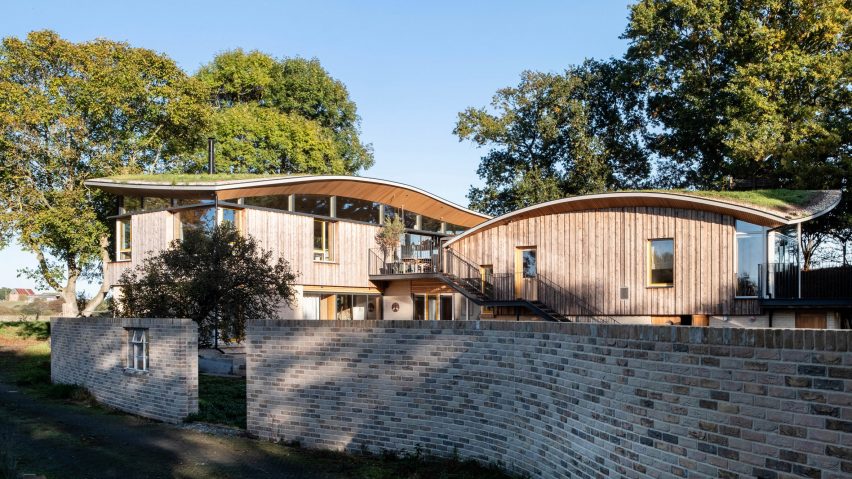
Undulating green roof helps Creek Cabin "live in harmony with the surrounding environment"
An undulating green roof and timber cladding help this Suffolk house by MAP Architecture and Jon Broome Architects, which was designed to Passivhaus standards, blend into the surrounding wetland.
Named Creek Cabin, the home was built into a bank in the Suffolk Broads Area of Outstanding Natural Beauty and was designed to pay respect to the nature on the site.
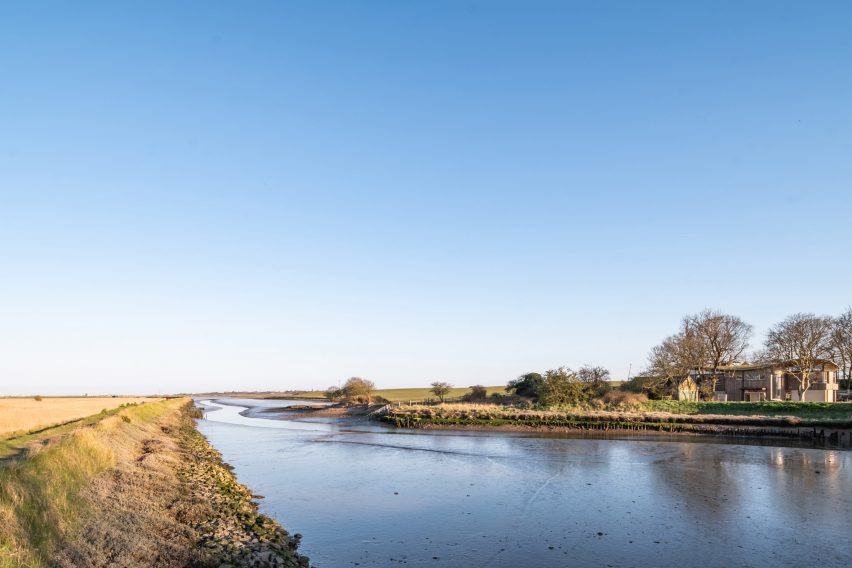
"For me, this project was about finding a way to live in harmony with the surrounding environment," MAP Architecture partner Robert Mawson told Dezeen.
"The local area is rich with biodiversity and a sensitive approach to all areas of the building has led to a home that not only sits within, but interacts with the local wildlife."
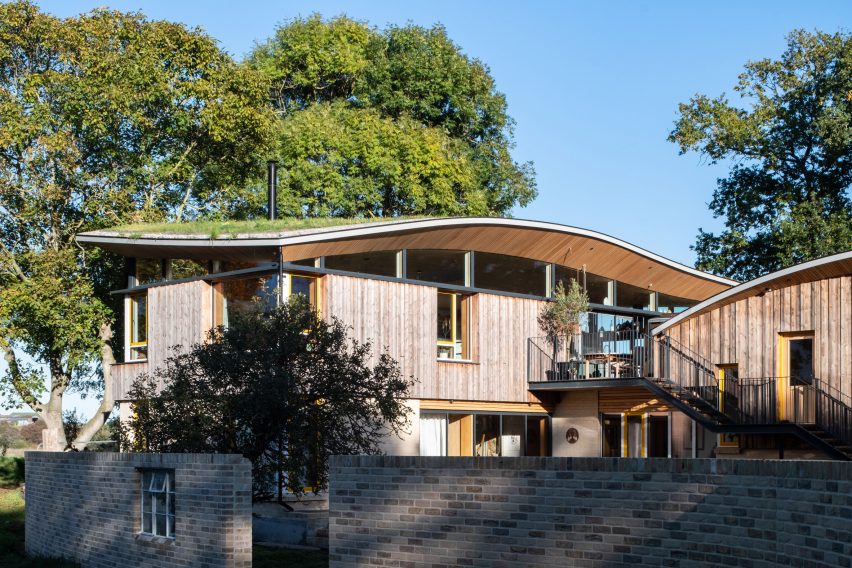
Building the home from primarily natural materials, MAP Architecture and Jon Broome Architects aimed to integrate the building with its site as much as possible, topping it with an undulating grass-covered roof designed to mimic rolling meadows.
"The curved green roof continues the form of the adjacent fields to reduce the visual impact of the new house on the surrounding landscape, while also reducing surface water runoff and the risk of flooding," architect Jon Broome told Dezeen.
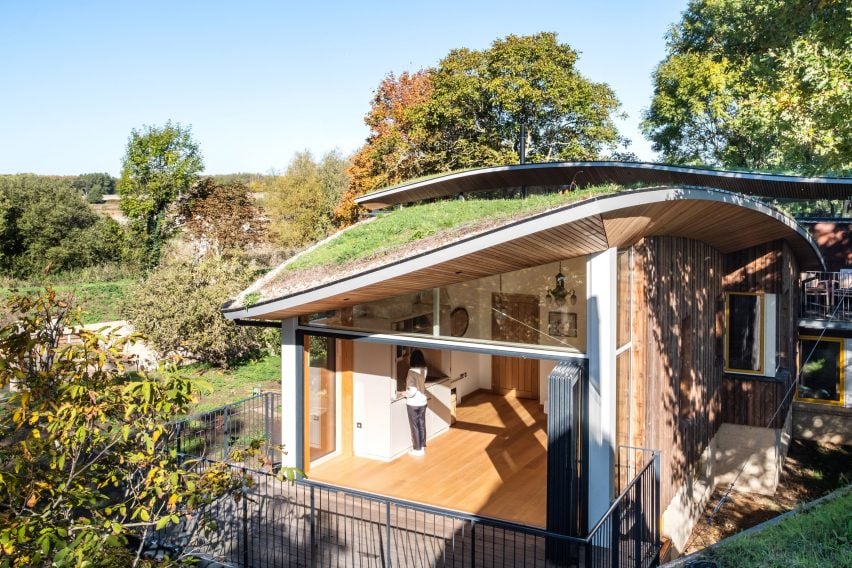
The cabin is surrounded by a curved brick wall to provide privacy from the road that runs along one edge of the site. An opening in the wall offers access to the garden, where a stepped patio leads to the house.
Across one facade, a staircase leads to a first-floor terrace, while timber-lined angular overhangs and curved forms extend from the building, designed to mimic the organic shapes of the landscape.

Various local materials feature on the home's exterior, including light gault bricks that form the ground-floor walls and Kebony timber cladding that was selected to help the upper level of the home blend in with the surrounding forest.
"The exterior of the building is clad in Kebony timber which is a Scots Pine softwood treated with a solution derived from recycled sugars to create a timber with a similar durability to hardwood," said Mawson.
"The cladding was set out in varied widths and thicknesses to resemble the local woodland."
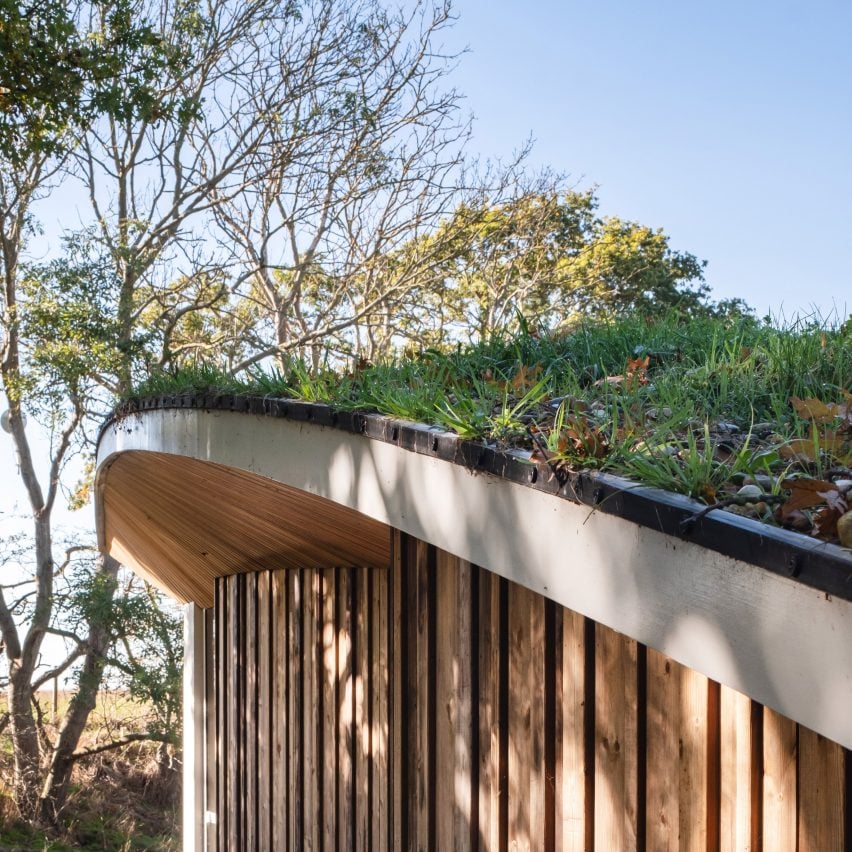
Inside, the curving roof was expressed as a timber ceiling that joins to high, triple-glazed windows that frame views across the site.
"The internal ceiling battens are made using an Ash facing piece with a softwood core to allow the battens to follow the roof curve," said Mawson.
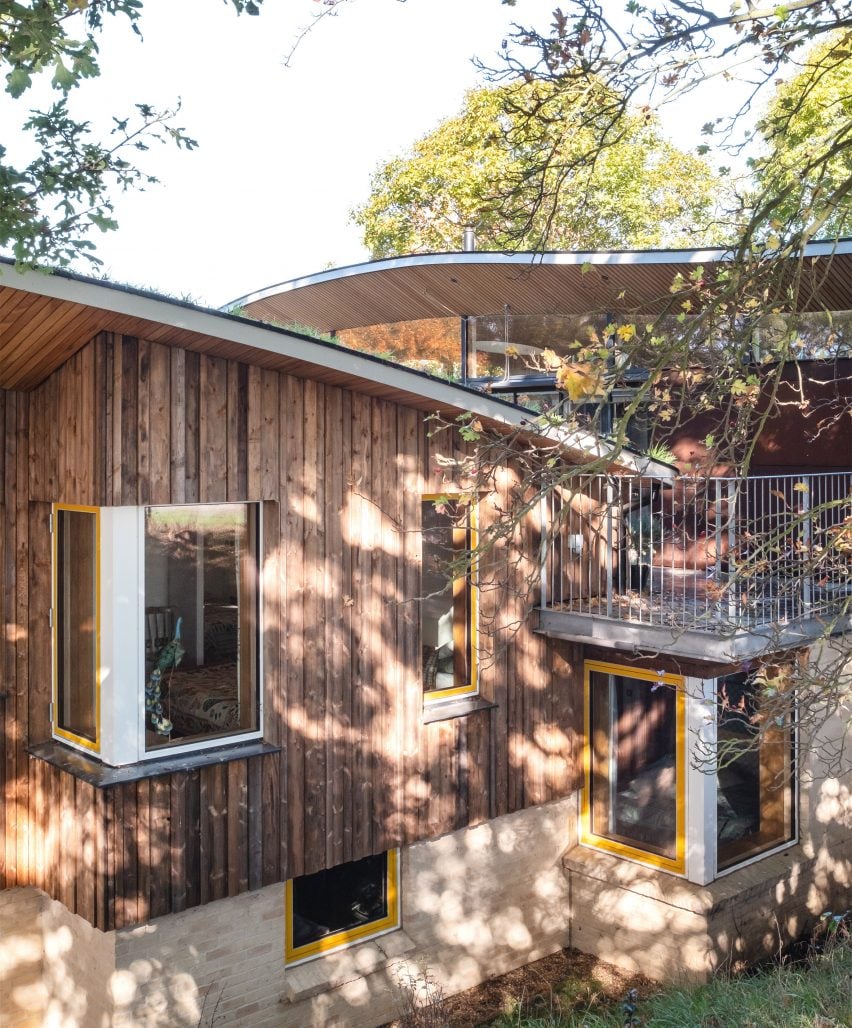
A mezzanine borders a double-height void on the upper floor, holding two bedrooms and a hybrid bedroom and sitting area that opens onto one of the home's three terraces.
"The building features three terraces to maximise views of the surrounding AONB," said the studios. "These terraces provide blended inside and outside living for most of the year, maximising the modest footprint of the building."
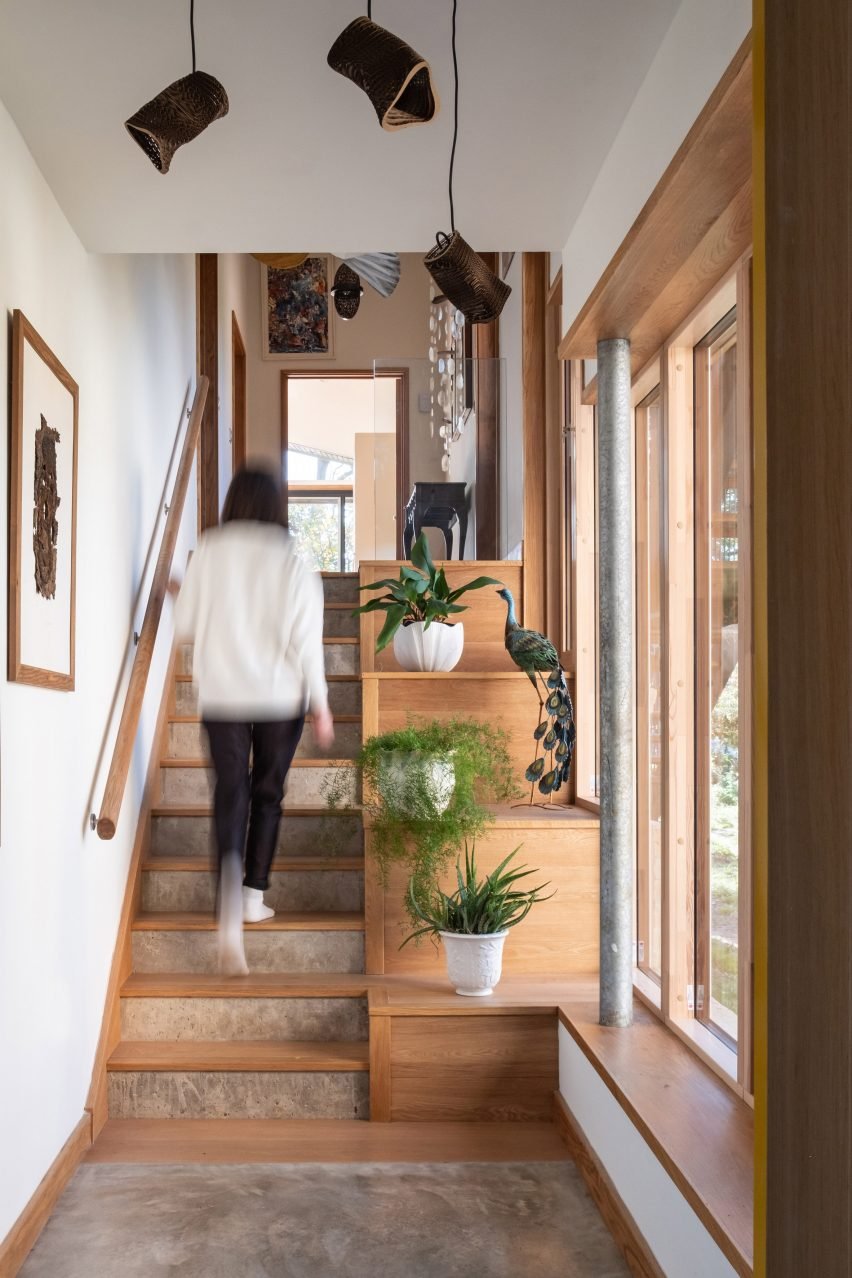
In addition to the bedrooms, the first floor features a kitchen as well as living and dining spaces with circular skylights and large windows that offer wide views across the creek.
"Window positions have been located to frame views to the adjacent wetlands and woodlands, providing different vistas throughout the year," said the studios.
Utility spaces as well as a gym, office and bathroom feature in the ground floor, which was made from yellow gault bricks selected for their low moisture absorption in response to the high risk of flooding in the area.
"Situated within the flood risk zone, the building needed a flood-resilient approach to construction, so the ground floor was designed with a solid concrete floor slab and brick and block wall construction," the studios explained.
"To be flood resilient, the bricks had to be selected with a low moisture absorption. This limited the choice amongst local bricks and Cambridge Gault was chosen," they continued.
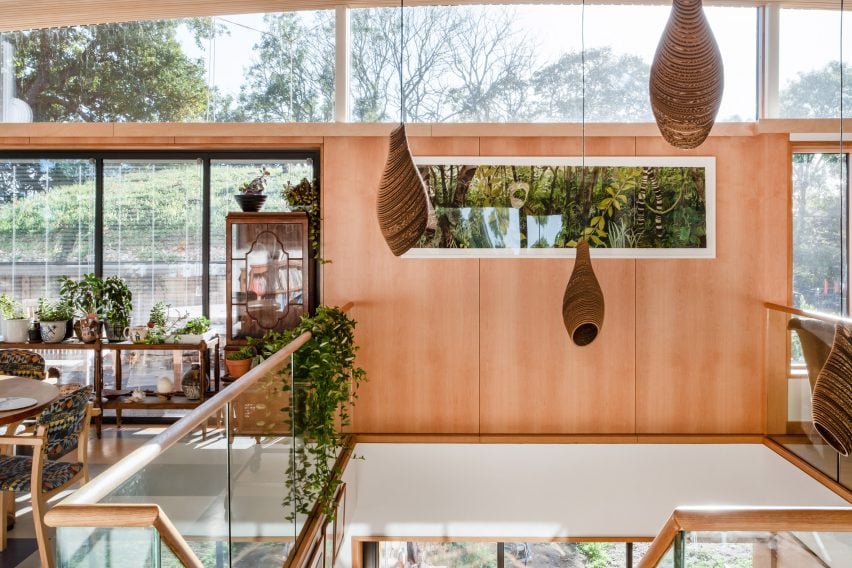
Throughout the interior, the studios made use of local materials, adding weathered timber boarding to the mezzanine and first floor and steel cladding in the kitchen.
High levels of insulation, triple glazing, and off-grid energy systems ensure that the home meets Passivhaus standards.
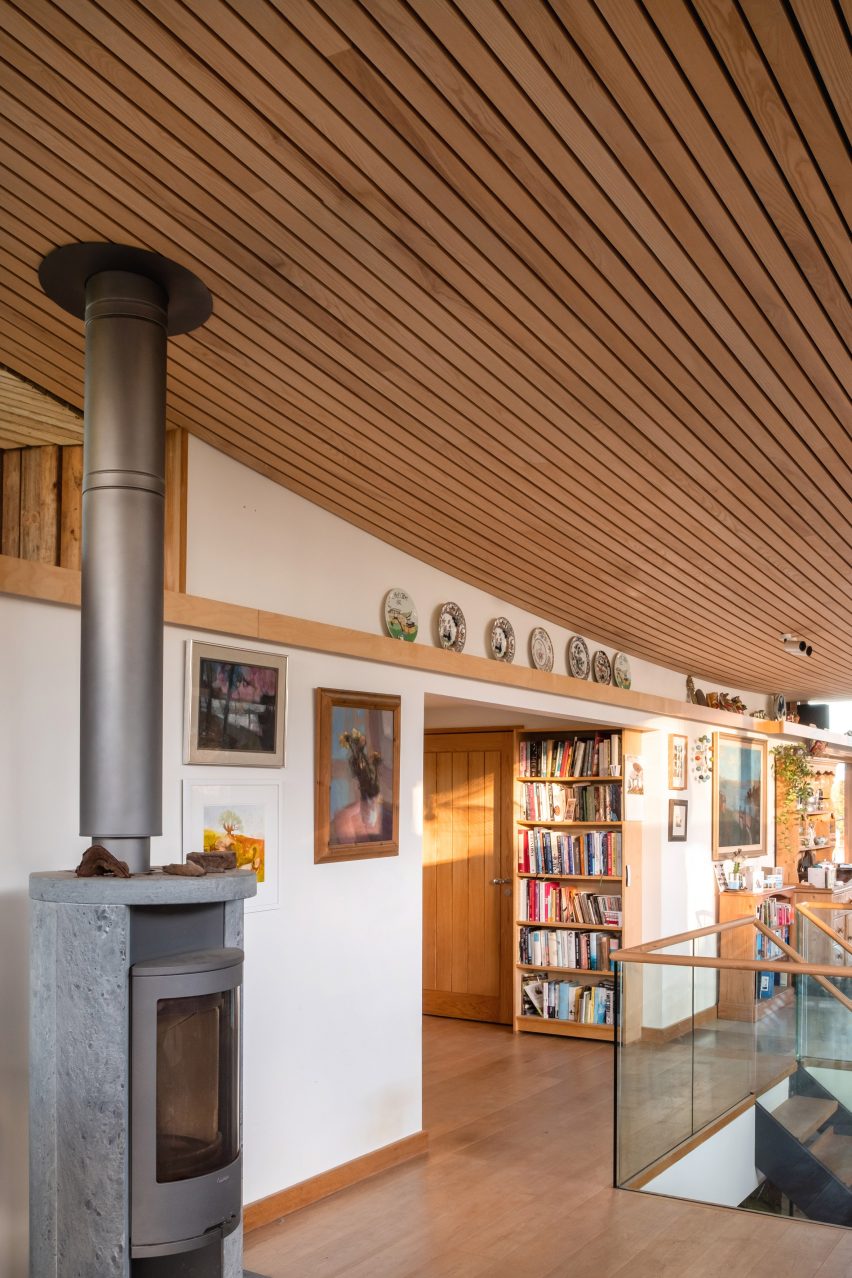
"The project is designed to Passivhaus standards with high levels of insulation, triple-glazed windows and air tightness of less than 1," said the studios. "The PVs, biomass boiler and wood chip storage are all located on site and the wood chips are locally sourced."
"To achieve high levels of thermal comfort whilst keeping the embodied carbon low, a largely timber structure was used, with sheep wool and wood fibre insulation on the upper levels," they continued.
Other homes topped with green roofs recently featured on Dezeen include a Czech Republic house with a curved concrete grass-topped roof and a circular holiday home by Sou Fujimoto that features a bowl-shaped green roof.
The photography is by David Valinsky.